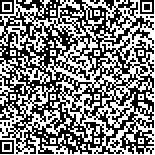下载中心
优秀审稿专家
优秀论文
相关链接
摘要

利用地面遥感观测数据,对一个浑浊介质假定下的植被双向反射模式,增加了对太阳漫射辐射因素处理,在可见光波段上,进行了系列模式反演试验。这些试验有助于完善植被双向反射模式中物理过程的描述,了解模式反演过程的控制和选择合适遥感观测数据进行模式反演。分析试验结果发现:(1)对LAI进行初值预估有利于获得较好的植被双向反射模式反演结果。(2)加入植被对太阳漫射辐射的反射过程描述,可以使植被双向反射模式的反演结果更加合理。(3)使用在太阳天顶角不太大(<45°)和太阳方位角偏离180°不多(<45°)观测条件下得到的遥感数据,可以使植被双向反射模式的反演结果较好。(4)在31°-61°的太阳天顶角范围和136°-258°的太阳方位角范围内,多角度观测使太阳天顶角和方位角因素对LAI反演结果的影响不显着。(5)当太阳漫射辐射的份额不大时,对LAI反演结果的影响不显着。如果只针对LAI,那么对反演植被双向反射模式所应用的地面遥感数据可以不进行大气校正处理,这样的结果虽然是从对地面遥感数据的处理中获得的,仍然对卫星遥感的观测时段选择和卫星遥感数据的选取和分析有一定的价值。
A simple scheme to process solar diffuse radiation was added in a bidirectional reflectance distribution (BRDF)model of vegetation canopy. The canopy was regarded as turbid media in BRDF model. With ground remote sensing data of soybean canopy, in visible spectral band, the modified BRDF model was inverted. The inversion experiments were organized to include those considering initial values of model parameters, contribution of solar diffuse radiation, and the influences of solar zenith and azimuth during remote sensing data collection. These experiments can be benefit to the description of the physical processes in BRDF model, understanding of the model inversion and the selection of proper remote sensing data for the inversion. (1)For the BRDF model used in inversion experiments, the appropriate estimation of LAI initial value is helpful to obtain good model inversion. When LAI value scope is one times or a bit more larger than the actual data and coincides with LAI scope of random initial values, the results of inversion are good. (2)With the consideration of solar diffuse radiation in BRDF model, the inversion can give more physically reasonable explanations. (3)The ground remote sensing data, collected under small zenith (<45°)and less solar azimuth deviation (<45°)to 180°, support stable inversion of the BRDF model. These conditions hint the period for data collection from 10:00 a.m. to 2:00 p.m. (4)Within 31°—61° of solar zenith and 136°\258° of solar azimuth, the multi angle observations of canopy reflectance makes the influence on the results of LAI by BRDF model inversion insignificant. (5)The influence of solar diffuse radiation on the results of LAI by BRDF model inversion was not significant when diffuse part was not large in total solar radiation. If only focusing on LAI in BRDF model inversion, it is possible to use the ground remote sensing data without atmospheric corrections. Though these results were obtained when processing ground remote sensing data, it is still potential to be applied in the selection and processing of satellite remote sensing data. The above conclusions are useful to the inversion of vegetation BRDF model in trubid media assumption. At the same time, the data used in model inversion were observed from soybean canopy which was close to ideal condition. The consideration of complex canopy was not included in this study. The potential applications of these results with satellite remote sensing data still need verifications.

